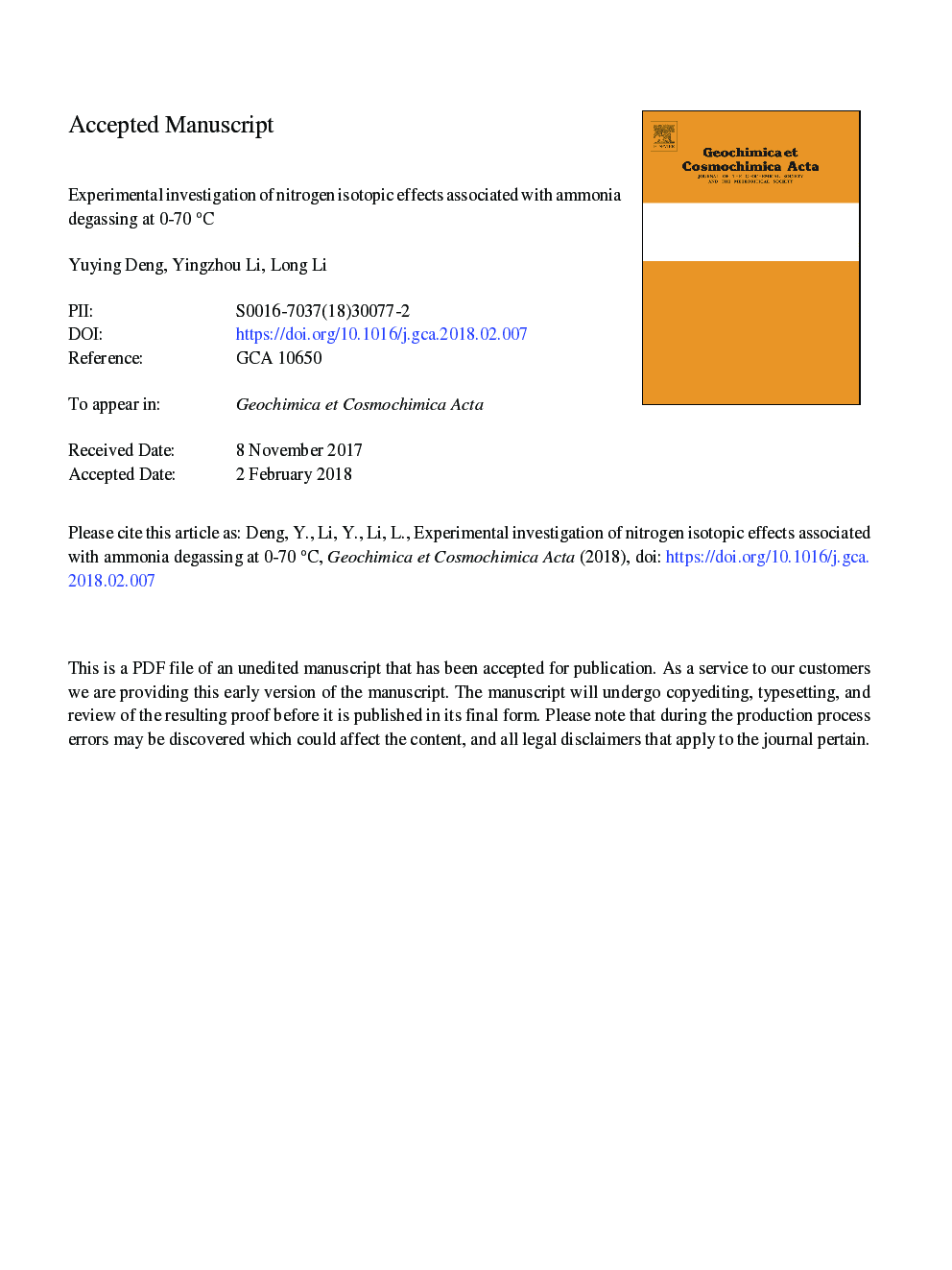| Article ID | Journal | Published Year | Pages | File Type |
|---|---|---|---|---|
| 8910832 | Geochimica et Cosmochimica Acta | 2018 | 33 Pages |
Abstract
Ammonia degassing is a common process in natural alkaline waters and in the atmosphere. To quantitatively assess the nitrogen cycle in these systems, the essential parameter of nitrogen isotope fractionation factors associated with ammonia degassing is required, but still not constrained yet. In this study, we carried out laboratory experiments to examine the nitrogen isotope behavior during ammonia degassing in alkaline conditions. The experiments started with ammonium sulfate solution with excess sodium hydroxide. The reaction can be described as: NH4+â¯+â¯OHâ (excess)â¯ââ¯NH3·nH2Oâ¯ââ¯NH3 (g)â. Two sets of experiments, one with ammonia degassing under static conditions and the other with ammonia degassing by bubbling of N2 gas, were carried out at 2, 21, 50, and 70â¯Â°C. The results indicate that kinetic isotopic effects are dominated during efficient degassing of ammonia in the bubbling experiments, which yielded kinetic nitrogen isotope fractionation factors αNH3(g)-NH3(aq) of 0.9898 at 2â¯Â°C, 0.9918 at 21â¯Â°C, 0.9935 at 50â¯Â°C and 0.9948 at 70â¯Â°C. These values show a good relationship with temperature as 103lnαNH3(g)-NH3(aq)â¯=â¯14.6â¯ââ¯6.8â¯Ãâ¯1000/T. In contrast, isotopic effects during less efficient degassing of ammonia in the static experiments are more complicated. The results do not match either kinetic isotope fractionation or equilibrium isotope fractionation but sit between these two. The most likely cause is that back dissolution of the degassed ammonia occurred in these experiments and consequently shifted kinetic isotope fractionation toward equilibrium isotope fractionation. Our experimental results highlight complicated isotopic effects may occur in natural environments, and need to be fully considered in the interpretation of field data.
Keywords
Related Topics
Physical Sciences and Engineering
Earth and Planetary Sciences
Geochemistry and Petrology
Authors
Yuying Deng, Yingzhou Li, Long Li,
